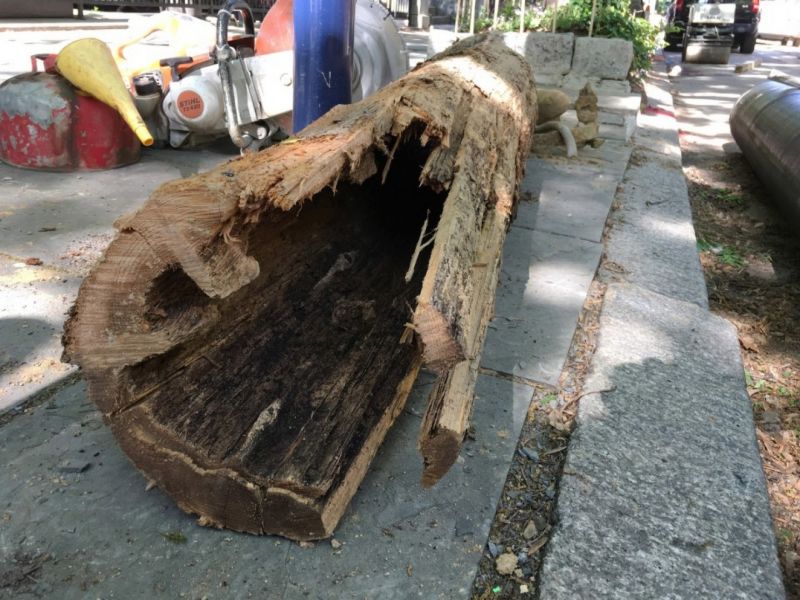Philadelphia’s High-tech, Natural Plumbing of 1812
Published on by Water Network Research, Official research team of The Water Network in Technology
In 1812, Philadelphia began installing what was at the time the latest thing in sanitation technology: a water main made of hollow tree trunks.

A Water Department crew working May 3 on the 900 block of Spruce Street unearthed this 200-year-old wooden water pipe. (Jon Snyder/Philadelphia Inquirer)
The sections of 10-foot pine logs, laboriously drilled to create a 4- to 6-inch center opening and bound together by iron couplings, connected the expanding edge of the city to the water tanks that stood on a hill less than a mile away.
The wooden plumbing supplied timber-tasting water to residents who could either fill their buckets for free at a public standpipe or pay $5 a year to connect directly to faucets in their yards or kitchens. The logs served for two decades until the city replaced them with 12-inch, cast-iron pipes in 1831, according to Adam Levine, resident historian at the Philadelphia Water Department.
The pine pipes lay buried and forgotten for two centuries until a worker sank a backhoe in the 900 block of Spruce Street earlier this week. The utility crew — the public-works heirs of the men who installed the wooden water mains during the James Madison administration — was replacing the old cast piping with what’s known as a ductile iron main. A tree expert spotted the exposed wooden pipes while walking her bike past the construction zone.
“This didn’t look like a normal tree,” arborist Julie Snell said, according to a description of the find released by the water department.
Philadelphia, then gearing up with the rest of the country to go to war with Britain for a second time, was a center of art and engineering in the young republic. Its water system was among the best that early 19th century American modernity could provide.
Designed in 1801 by Benjamin Latrobe, the architect of the U.S. Capitol Building, the Philly system used two steam engines to pump water from the Schuylkill River up to the domed, neoclassical Centre Square Water Works, where the wooden tanks could hold about 25 minutes worth of water at a time. Gravity then shot the water through a wooden-pipe network that grew to more than 45 miles in length by the time metal pipes became the norm in the 1830s.
The local government commissioned the system because, as the documents of the day detail, “the speedy introduction of a copious supply of wholesome water is deemed essential to the health and preservation of this city.”
Read more: The Washington Post
Media
Taxonomy
- Sanitation
- Urban Water
- Water & Sanitation
- Urban Water Supply
- Infrastructure
- Pipelines
- Pipes and Pipelines